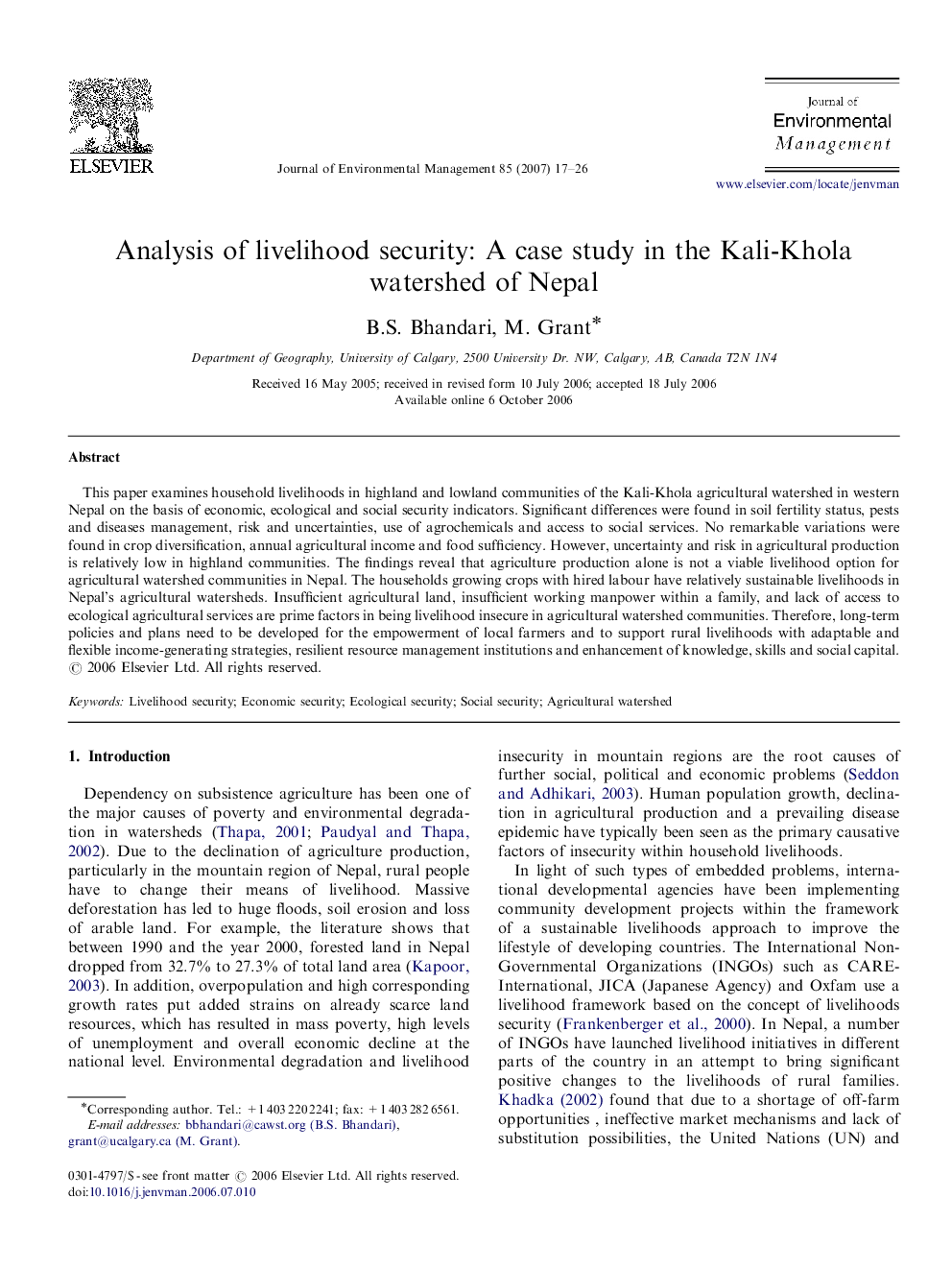| Article ID | Journal | Published Year | Pages | File Type |
|---|---|---|---|---|
| 1058576 | Journal of Environmental Management | 2007 | 10 Pages |
This paper examines household livelihoods in highland and lowland communities of the Kali-Khola agricultural watershed in western Nepal on the basis of economic, ecological and social security indicators. Significant differences were found in soil fertility status, pests and diseases management, risk and uncertainties, use of agrochemicals and access to social services. No remarkable variations were found in crop diversification, annual agricultural income and food sufficiency. However, uncertainty and risk in agricultural production is relatively low in highland communities. The findings reveal that agriculture production alone is not a viable livelihood option for agricultural watershed communities in Nepal. The households growing crops with hired labour have relatively sustainable livelihoods in Nepal's agricultural watersheds. Insufficient agricultural land, insufficient working manpower within a family, and lack of access to ecological agricultural services are prime factors in being livelihood insecure in agricultural watershed communities. Therefore, long-term policies and plans need to be developed for the empowerment of local farmers and to support rural livelihoods with adaptable and flexible income-generating strategies, resilient resource management institutions and enhancement of knowledge, skills and social capital.
